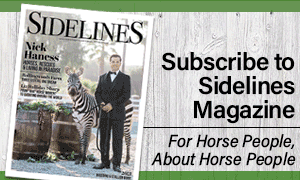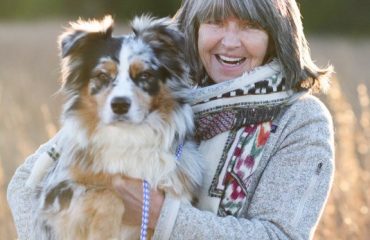
Boyd Martin riding Gloria Callen’s mare Welcome Shadow
Photo by Amber Heintzberger
Well known for both his fun-loving approach to life and his indefatigable work ethic, Boyd Martin has represented the U.S.A. in three-day eventing at two Olympic Games and two World Championships, and was on the gold medal-winning Pan Am Games team in 2015. Boyd’s wife, Silva Martin, is a grand prix dressage rider and they have a son, Nox. Boyd and Silva train out of their own farm, Windurra USA in Cochranville, Pennsylvania, and spend winters at Stable View Farm in Aiken, South Carolina.
How do you know when a horse has what it takes to get to the top? — Serena Schouten
For eventing, the horse really has to have the right attitude. You can take all the talent in the world, but if the horse doesn’t walk out of the barn every day with a spring in his step, the willingness to do the training to be good at the dressage and show jumping, or is put off by the challenges of cross-country, you’re not going to make it at the international level. Obviously, he also has to stay physically sound, but the right attitude is essential.
Sometimes a horse will seem promising, and even make it to the three-star level, but not have the stamina or drive for the four-star. If your horse is not cooperating, the first step is a full veterinary examination to make sure everything is working properly. If he’s fit and sound, it’s time to dig deep and ask yourself if he’s just not cut out for the level at which you want to compete. Maybe he needs to go to a more confident rider, or a rider who will put fewer demands on him. Maybe he needs a new career altogether; I’ve had a couple of top event horses who for various reasons changed careers to become very successful at the jumper shows. It’s important to be honest about your horse’s capabilities and keep an open mind about their future. Even if you’ve invested years of your life and thousands of dollars in a horse’s career, they might not be the one to take you to the top.
What inspired you to be an eventer? And what advice would you offer to riders who want to follow in yours and many other eventers’ footsteps? — Morgan Stebbins
I grew up outside of Sydney, Australia, where every kid had a pony in the backyard. We’d get off the school bus and hop on our ponies and gallop about, jumping logs and barrels and whatever we could get our hands on to make little jumps. When I graduated from high school, I moved into the bunkhouse at Heath Ryan’s barn and I never looked back. I worked hard for Heath, and I learned a lot in return. For anyone with their eye on becoming a professional, I’d say it’s a great opportunity to become a working student, but don’t expect it to be easy. You get out of it what you put into it, and the harder you work, the more likely you are to be a success. It’s also easy to get put off by setbacks, and believe me I’ve had many, but if you really want to succeed, you have to stick with it when things get tough.
What are your “do’s and don’ts” for seeking sponsorship, particularly for up-and-coming athletes? — Ginger Carpenter
There is always the challenge for up-and-comers that you need competition mileage and success to prove that you are worth sponsoring. Brands ideally want to sponsor a rider who will represent their products in a positive light — namely, by winning events. That said, there are a few things the modern event riders can do to help their cause. First, find someone to put together a decent website representing your achievements as a rider. Purchase a few good quality photos, hire someone to write the text if that’s not your strong suit, and present yourself as well as you possibly can.
Then get on social media and post relevant information about your riding and your business, if you are a professional. Share training tips, results, photos, whatever you can to show that you are involved in the sport; start a blog and find a niche if you can. There are riders who focus on fitness and nutrition, and that’s their angle. Some people are especially good with young horses. If you have a large number of people following you on social media, that makes you more marketable.
In the end, though, companies want to sponsor a great rider, not just a popular one. Don’t spend all of your time staring at your phone and working on getting more “Likes” on social media when you could be spending time in the saddle and sharpening your skills as a rider. When you contact a company, be sure to tell them what you can offer them in return for their sponsorship. You’re not looking for a handout, but to develop a mutually beneficial relationship.













